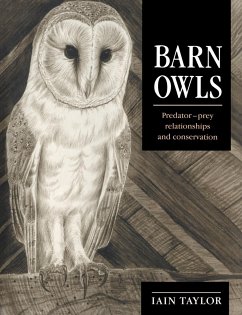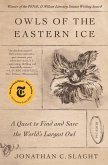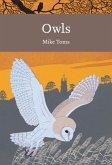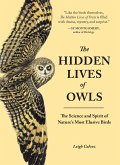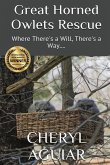This book discusses the relationship between barn owls, their prey and prospects for conservation.
When seen hunting over a meadow, barn owls have an ethereal grace and beauty that can be matched by no other bird. The barn owl has an almost global distribution and has lived in close proximity to humans since settlement and farming created the forest clearings needed for hunting and places in which to nest. However, in many countries, barn owl numbers are falling rapidly. This book explores the relationships between barn owls and their prey worldwide, and demonstrates how an understanding of such relationships can help in the conservation of the species. In this comprehensive account, Iain Taylor describes the biology and ecology of this species, including the factors affecting breeding success, and causes of mortality affecting the final recruitment of new birds into the population. He concludes by suggesting ways in which we can manage and conserve this beautiful bird for the future.
Table of content:
Preface; 1. Introduction; 2. Distribution and variation; 3. Diet; 4. Foraging behaviour; 5. The ecology and behaviour of the prey; 6. Prey selection and energetics; 7. Ranging and roosting behaviour; 8. Moult; 9. Breeding seasons; 10. Nest sites; 11. Courtship and eggs; 12. Production of young; 13. Dispersal; 14. Mortality; 15. Population size and regulation; 16. Conservation; 17. Conclusions; Appendices; References; Index.
Hinweis: Dieser Artikel kann nur an eine deutsche Lieferadresse ausgeliefert werden.
When seen hunting over a meadow, barn owls have an ethereal grace and beauty that can be matched by no other bird. The barn owl has an almost global distribution and has lived in close proximity to humans since settlement and farming created the forest clearings needed for hunting and places in which to nest. However, in many countries, barn owl numbers are falling rapidly. This book explores the relationships between barn owls and their prey worldwide, and demonstrates how an understanding of such relationships can help in the conservation of the species. In this comprehensive account, Iain Taylor describes the biology and ecology of this species, including the factors affecting breeding success, and causes of mortality affecting the final recruitment of new birds into the population. He concludes by suggesting ways in which we can manage and conserve this beautiful bird for the future.
Table of content:
Preface; 1. Introduction; 2. Distribution and variation; 3. Diet; 4. Foraging behaviour; 5. The ecology and behaviour of the prey; 6. Prey selection and energetics; 7. Ranging and roosting behaviour; 8. Moult; 9. Breeding seasons; 10. Nest sites; 11. Courtship and eggs; 12. Production of young; 13. Dispersal; 14. Mortality; 15. Population size and regulation; 16. Conservation; 17. Conclusions; Appendices; References; Index.
Hinweis: Dieser Artikel kann nur an eine deutsche Lieferadresse ausgeliefert werden.
